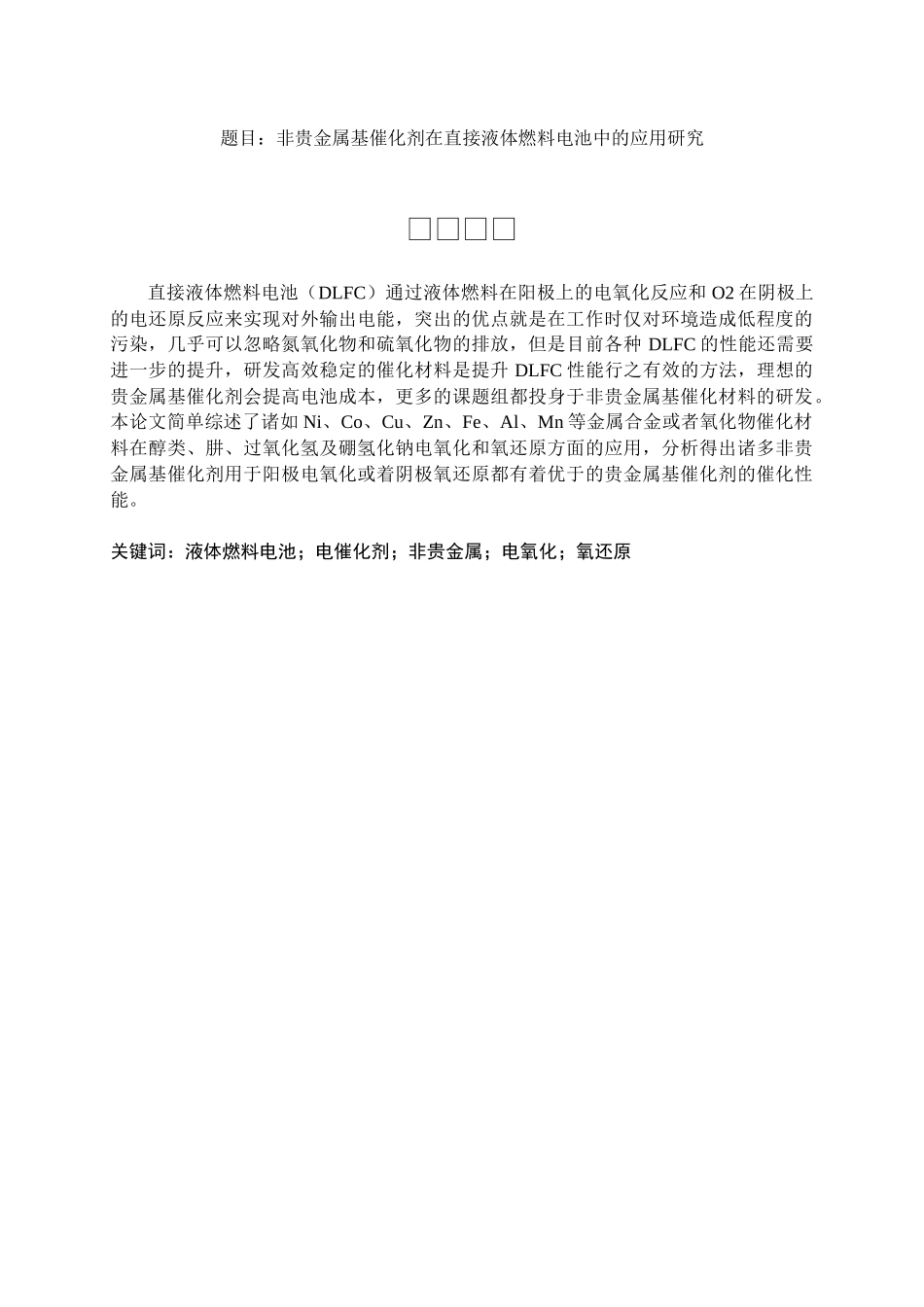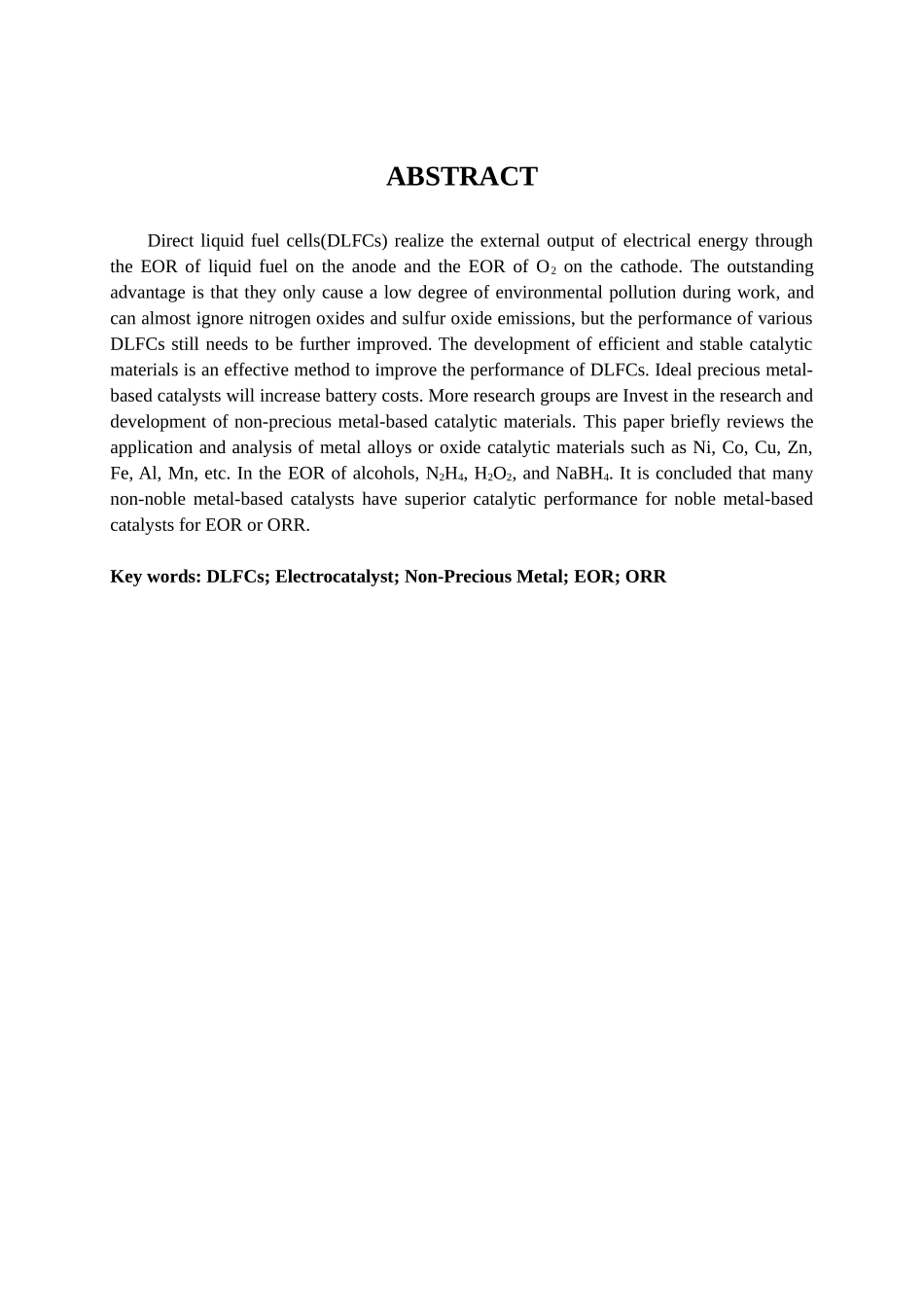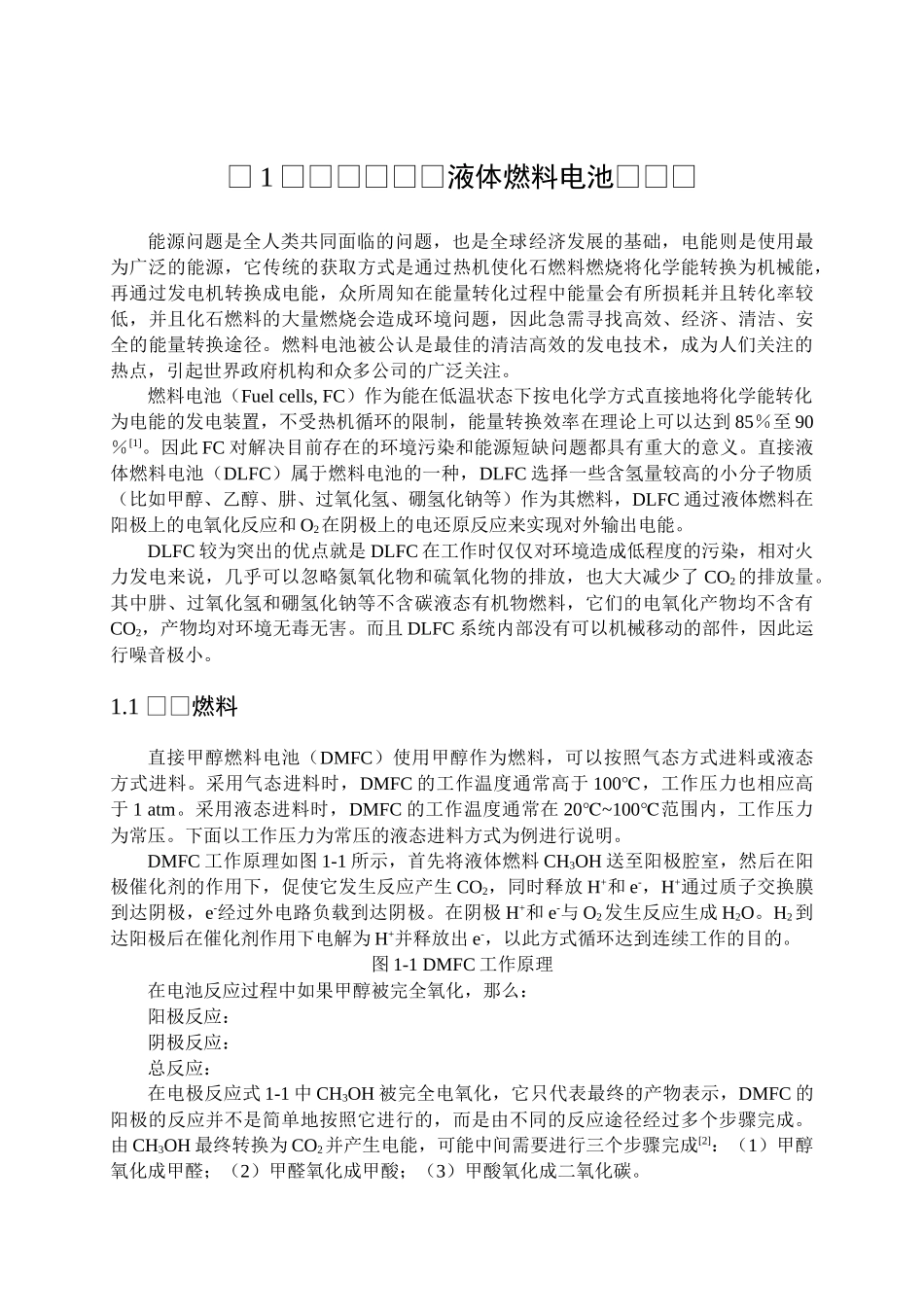题目:非贵金属基催化剂在直接液体燃料电池中的应用研究摘摘摘摘直接液体燃料电池(DLFC)通过液体燃料在阳极上的电氧化反应和 O2 在阴极上的电还原反应来实现对外输出电能,突出的优点就是在工作时仅对环境造成低程度的污染,几乎可以忽略氮氧化物和硫氧化物的排放,但是目前各种 DLFC 的性能还需要进一步的提升,研发高效稳定的催化材料是提升 DLFC 性能行之有效的方法,理想的贵金属基催化剂会提高电池成本,更多的课题组都投身于非贵金属基催化材料的研发。本论文简单综述了诸如 Ni、Co、Cu、Zn、Fe、Al、Mn 等金属合金或者氧化物催化材料在醇类、肼、过氧化氢及硼氢化钠电氧化和氧还原方面的应用,分析得出诸多非贵金属基催化剂用于阳极电氧化或着阴极氧还原都有着优于的贵金属基催化剂的催化性能。关键词:液体燃料电池;电催化剂;非贵金属;电氧化;氧还原ABSTRACTDirect liquid fuel cells(DLFCs) realize the external output of electrical energy through the EOR of liquid fuel on the anode and the EOR of O2 on the cathode. The outstanding advantage is that they only cause a low degree of environmental pollution during work, and can almost ignore nitrogen oxides and sulfur oxide emissions, but the performance of various DLFCs still needs to be further improved. The development of efficient and stable catalytic materials is an effective method to improve the performance of DLFCs. Ideal precious metal-based catalysts will increase battery costs. More research groups are Invest in the research and development of non-precious metal-based catalytic materials. This paper briefly reviews the application and analysis of metal alloys or oxide catalytic materials such as Ni, Co, Cu, Zn, Fe, Al, Mn, etc. In the EOR of alcohols, N2H4, H2O2, and NaBH4. It is concluded that many non-noble metal-based catalysts have superior catalytic performance for noble metal-based catalysts for EOR or ORR.Key words: DLFCs; Electrocatalyst; Non-Precious Metal; EOR; ORR摘 1 摘摘...












